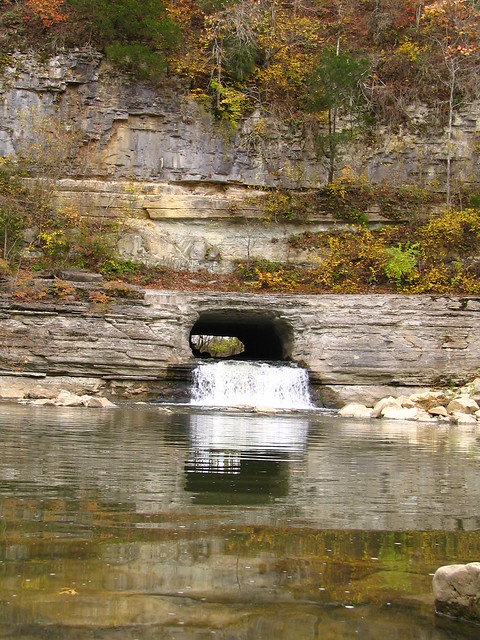
In 1820, Montgomery Bell created an Engineering masterpiece that is recognized today as an engineering landmark and a national historic landmark. Slaves under Bell's direction excavated a 200 foot tunnel about 8 feet high and fifteen feet wide through a limestone bluff at a point on the river known as the "Narrows". It is here that the river makes a loop around a high limestone ridge before returning to within 200 feet of itself again. Bell knew that by diverting water through the tunel, the weight of the falling water from the plank flume would cause the water wheels to revolve on their axles. As the axles, made of large poplar logs, turned the protuding pins of white oak driven near the end of the log (called trip levers) would press down and then release a hammer lever. The hammer lever was a long log with a heavy piece of metal attached to its' end. The pounding motion converted the hot brittle pig ironbillets, which were held with tongs on top of a large anvil, into malleable iron bars and plates that were more manageable for blacksmiths to use in their forges. Each full revolution of the water wheel produced two heavy blows to the iron. Products of the forge were hauled by ox drawn wagons or pack mules through the Narrows Gap to markets in Nashville or Franklin or floated down the Harpeth and The Cumberland River to Clarksville where they could be shipped up or down the river by steamboat to other locations.
Montgomery Bell owned and operated Pattison Forge, which bears his mother's maiden name, from 1832-1854. Afterwards, James L. Bell ran the operation until it was closed during the 1860's. After the Civil War, the iron industry in Tennessee remained somewhat depressed, and the forge did not re-open. During the early 1880's the Narrows of the Harpeth was sold by the Bell descendants. In the years to follow, the tunnel furnished power to operate a saw mill, and later a gristmill, which was washed away during a flood in the mid 1890's.
Today, the site of Pattison Forge, located at the Narrows of the Narpeth, is a part of the Harpeth River state Park and is maintained by the Tennessee Department of Environment and Conservation. The site is also listed on the National Register of Historic Places. The intake side is just down a wooden staircase from the small parking area. The view above was made by walking the 10 minute trail from the parking area.
No comments:
Post a Comment